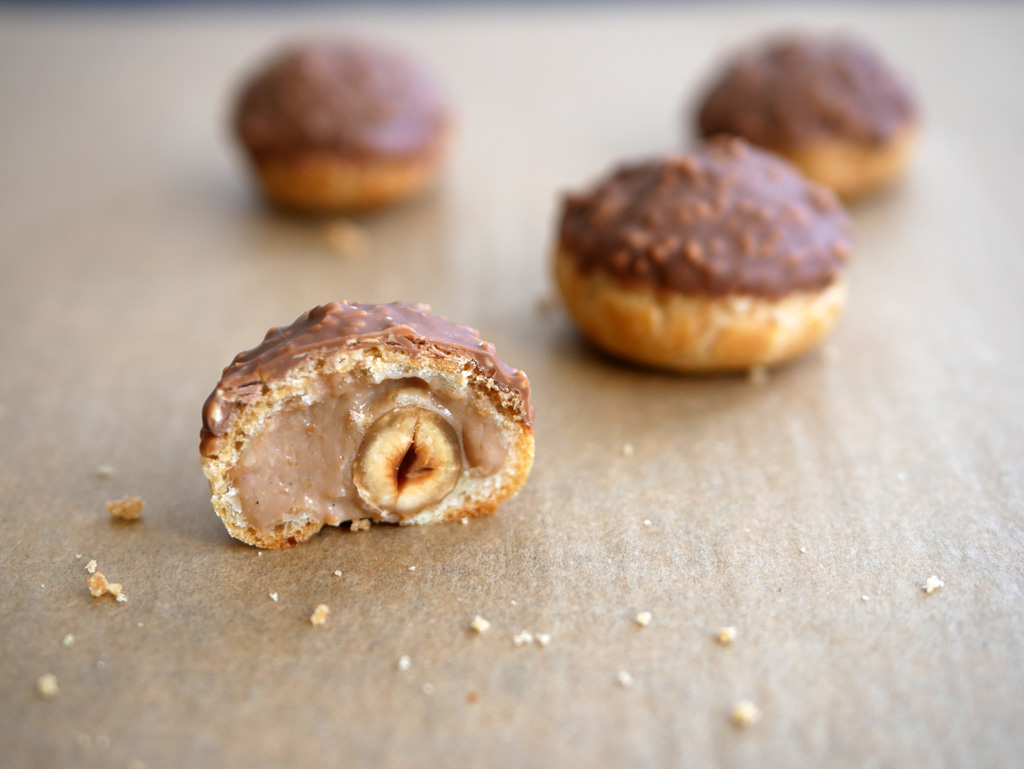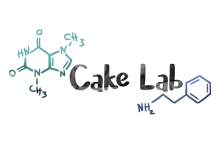Ferrero Rocher Profiteroles

In the year 1982, two wonderful events happened to my mom. After ten years of constant efforts to bring a child to the world, and after five failed pregnancies, my mom had finally delivered a healthy baby boy (me!). In the same year, unknowingly to her, another sweet little thing was born, and that was the Ferrero Rocher. Shortly after she discovered it, it became one of her favorite candies. Since then it has been a regular guest of honor in our chocolate kitchen drawer.
I recently discovered that my mom really likes éclairs and choux pastries. I decided to try and combine her two loves and that’s how the Ferrero Rochers Profiteroles were born.
I tried to stay true to the original confectionery and assemble the profiterole from similar layers. I even made a diagram, which reminded me of Earth’s interior diagrams I used to draw in my geology classes in the not-too-distant past. (In fact, Rocher means rock in French, so maybe it’s not a coincidence)
The Ferrero Rocher hides a whole crunchy hazelnut in the heart, wrapped by a creamy hazelnut filling that is surrounded by a crisp wafer shell covered with milk chocolate and pieces of roasted nuts. The Profiterole did not stray too far. It also contains a core of a whole roasted hazelnut wrapped by gianduja mousseline cream. The wafer shell is presented by a crumble topping and then a layer of milk chocolate and pieces of nuts on top.
* The recipe makes about 50 small profiteroles.
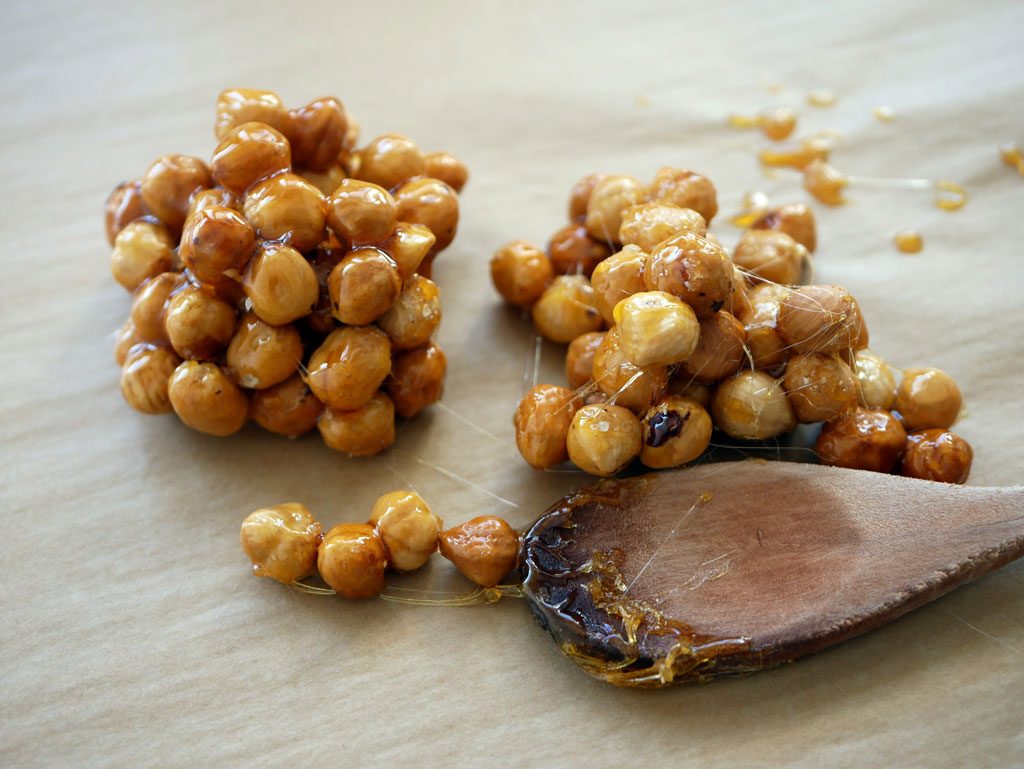
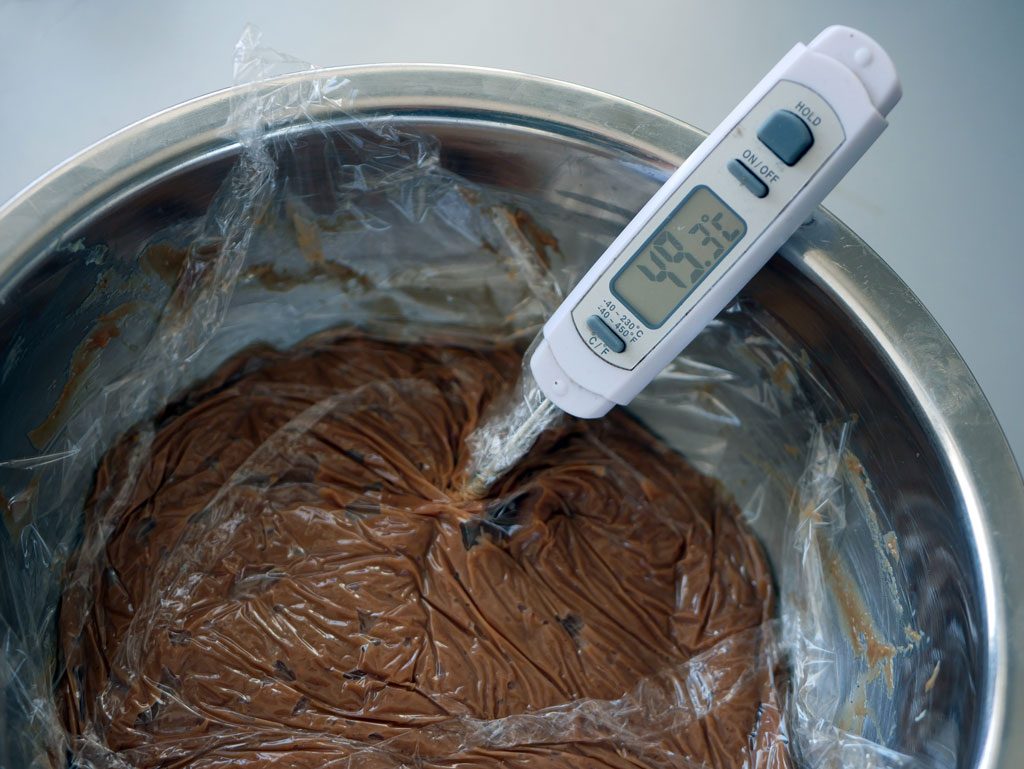
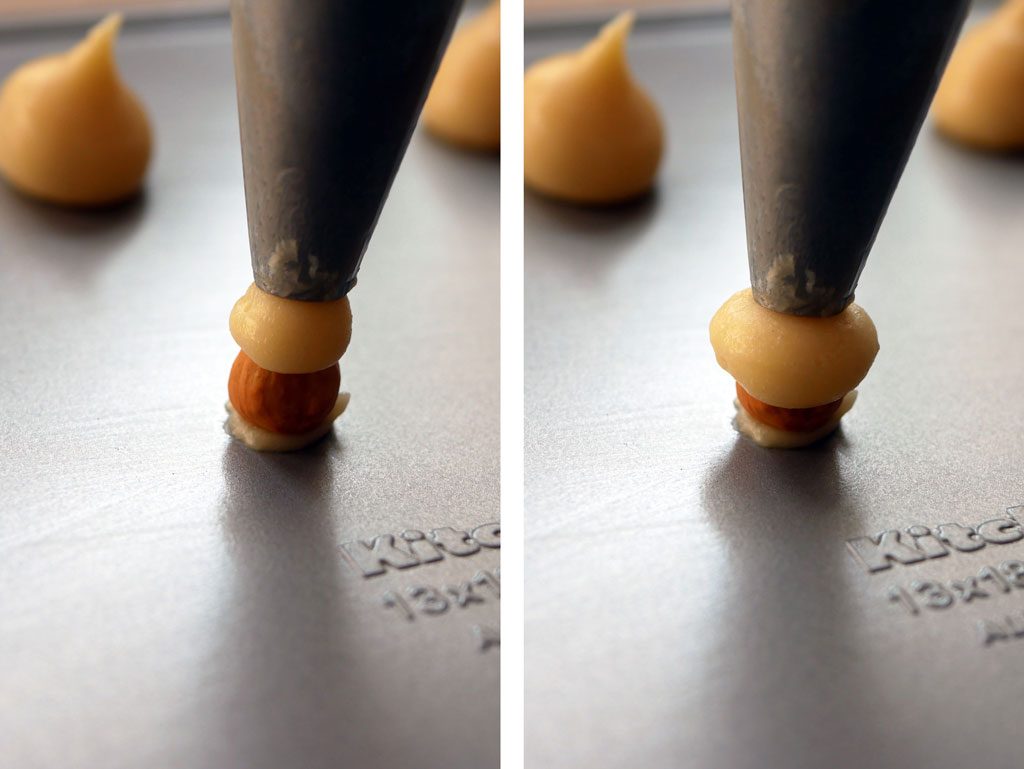

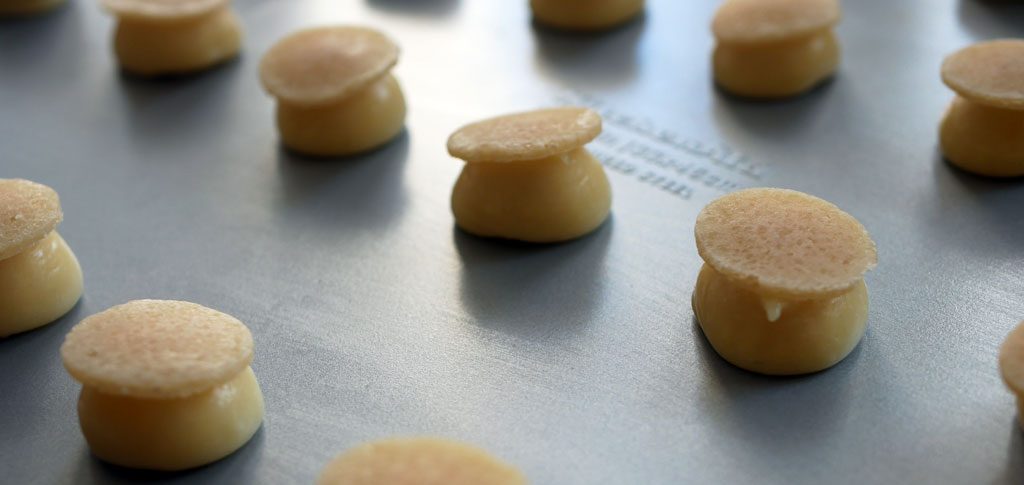




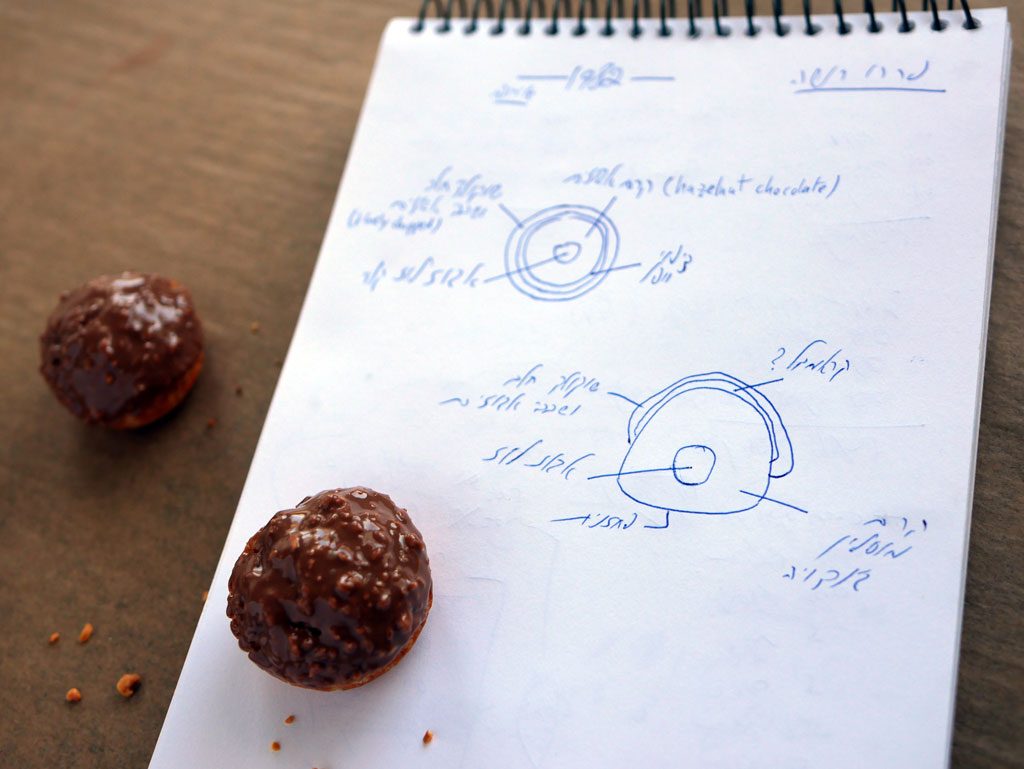
Crumble topping
80 g softened butter (cut into cubes)
100 g light brown sugar
100 g flour
Hazelnut praliné (may be store-bought)
20 g water
60 g sugar
100 g peeled and roasted hazelnuts
1 g (1/4 tsp) coarse sea salt
Gianduja mousseline cream
70 g hazelnut praliné
70 g chocolate milk
250 g milk
60 g egg yolk
60 g sugar
20 g corn starch
2 tsp vanilla paste
60 g softened butter (cut into cubes)
Choux Pastry
125 g butter
125 g milk
125 g water
5 g sugar
5 g salt
140 g flour
220 g eggs
+ About 50 peeled and roasted whole hazelnuts
Glaze
150 g chocolate milk
50 g peeled and roasted hazelnuts
Crumble topping
Put softened butter and brown sugar in a mixing bowl. Place in a stand mixer fitted with the paddle attachment and mix on medium speed until uniform. Add flour and mix just until the dough begins to form. Remove dough from the mixer and cover in plastic wrap. Flatten it a little with a rolling pin and keep in the fridge for at least two hours.
Remove dough from the fridge and take off the plastic wrap. Place the dough between two baking sheets and flatten with a rolling pin until it is 1-2 mm thick (turn sides occasionally). If the dough begins to soften, put back in the fridge for a short time.
When the dough is flat enough, put back in the fridge for at least another hour or until the profiteroles are ready to be baked.
Hazelnut praliné
Caramel: Put water and then sugar in a saucepan. Place on medium heat. Stir the sugar with a spatula to dissolve it. Once the water starts to boil, stop stirring and remove the spatula. Keep on medium heat until you get a light brown color.
Important (!) Do not overheat. If the color starts to darken, the praliné will become too bitter. It’s best to remove from heat once it turns light brown.
Add hazelnuts and salt to the saucepan. Mix until all hazelnuts are covered in a thin layer of caramel. Pour the caramelized hazelnuts onto a baking paper (no need to separate them just yet). Let them cool down at room temperature.
Break the chunk of hazelnuts into smaller pieces and transfer to a food processor. Grind in short pulses until you obtain a powder and then grind again at high speed until you get a creamy hazelnut paste. Weigh the amount needed and store the rest in the fridge.
Gianduja mousseline cream
Gianduja: Melt chocolate on a double boiler. Remove from heat, add hazelnut praliné and mix well. Keep in room temperature.
Put milk and vanilla paste in a saucepan. Start warming on medium heat. Add about a third of the sugar to the milk. Add the rest of the sugar to the egg yolks and whisk immediately. Add corn starch and whisk again. Once the milk starts to boil, remove from heat and pour into the yolk-sugar mix while whisking all along. Pour the mixture through a sieve back to the saucepan (to get rid of egg chunks that may have hardened while adding the hot milk). Heat on medium heat and whisk constantly until it starts to boil. The mixture will thicken and become creamy. Remove from heat when the cream begins to bubble.
Transfer creamy mixture to a clean bowl, add gianduja and whisk together. Lay plastic wrap on top of the cream to keep a crust from forming while it cools. When the cream temperature reaches below 40 ºC (104 ºF), add the butter gradually and mix until uniform. Again, lay plastic wrap on top of the cream and put in the fridge.
Choux Pastry
Sift flour and set aside.
Into a saucepan, add butter cut in cubes, milk, water, sugar and salt. Heat on medium-high heat. Mix and make sure all the butter melts before boiling. When the mix comes to boil, remove from stove and immediately add flour all at once to the saucepan. Mix well with spatula until a uniform mix is formed, resembling mashed potatoes. This is the panade mix. Dry the panade about a minute on low heat, mixing with a spatula, until the mixture begins to retract from the sides of the saucepan and congeals.
Put the panade in a mixing bowl and mix on low-medium speed with a flat beater about a minute or two so it cools a bit. In a separate bowl, beat the eggs with a fork until uniform, then add gradually to the mixer. This is an important step! Add the eggs little by little, each time waiting until the eggs combine with the batter completely before adding more. Keep mixing at low-medium speed. The batter is ready when it is smooth, shiny and stable.
How to check if it’s ready: roll a bit of the batter between your thumb and forefinger and stretch it. It should form into a kind of elastic string that does not easily tear.
Sometimes the batter is ready towards the end, a little before you add all the eggs. Make sure to pay attention, otherwise the mix will be too runny and won’t hold its shape after it has been piped.
Preheat oven to 250 ºC (480 ºF).
Cover a baking tray with a baking sheet, or cover the tray with a thin layer of butter. Fit one or two pastry bags with a 10 mm smooth tip and fill it with the batter.
Pipe a tiny bit of batter on the baking sheet and place a hazelnut on top. Hold the pastry bag at a 90° angle above the hazelnut and pipe right on top of it to cover it completely and form a drop-shaped batter, 3 cm wide. Repeat for the rest of the hazelnuts.
Just before putting the baking sheet in the oven, remove the crumble topping dough from the fridge. Using a round 3 cm cookie cutter, cut circles from the dough and place them on top of the drop-shaped batter. Keep the remaining dough in the fridge.
When the oven reaches the desired temperature, turn it off and place the baking sheet inside. This is the step in which the profiteroles rise. Do not open the oven door or the profiteroles will deflate. After 15 minutes, open the oven door a teensy bit (about 1 cm) and let the steam out for a few seconds (so the profiteroles don’t crack from the humidity). Close the oven and set it to 170 ºC (340 ºF). Bake for 8-10 minutes, until the profiteroles brown.
Repeat the same process with the rest of the batter.
Putting it all together!
Using a knife, cut a small hole on the bottom of each profiterole.
Remove the Gianduja mousseline cream from the fridge. Fit a pastry bag with a 4 mm smooth tip and fill it with the cream. Fill each profiterole with the cream through the hole until you feel it expand a bit in your hand. Remove any extra cream oozing from the holes with a knife or a frosting spatula. Put profiteroles in the fridge in the meantime.
Prepare the glaze: Put hazelnuts in a food processor and grind in short pulses until the nuts are chopped to coarse pieces. Sift chopped hazelnuts to get rid of the excess powder. Melt the chocolate on a double boiler. Remove from heat, add the chopped hazelnuts and mix until uniform.
Remove the profiteroles from the fridge and dip each profiterole in the glaze. Keep in the fridge.
The profiteroles are good to eat the same day and the day after. Any longer and they lose their freshness and crispiness.

Tags In
Related Posts
Leave a reply:Cancel reply
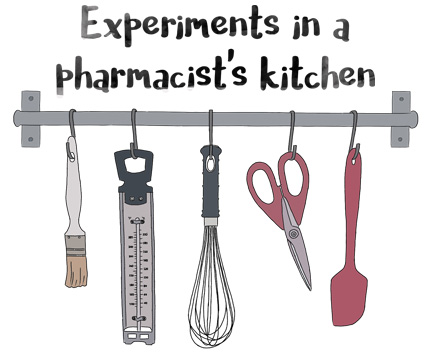
Search the blog
![]()
Get updates by email
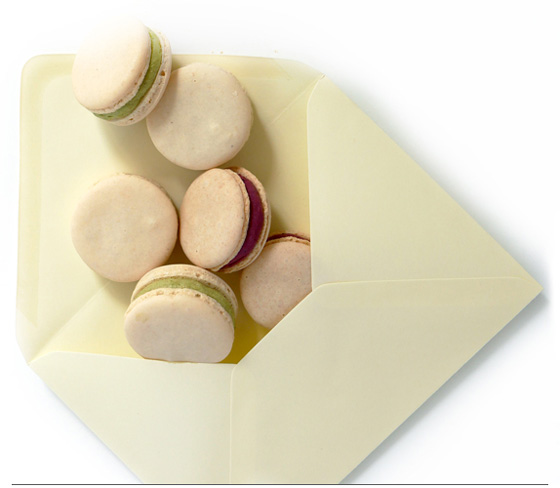
![]()
